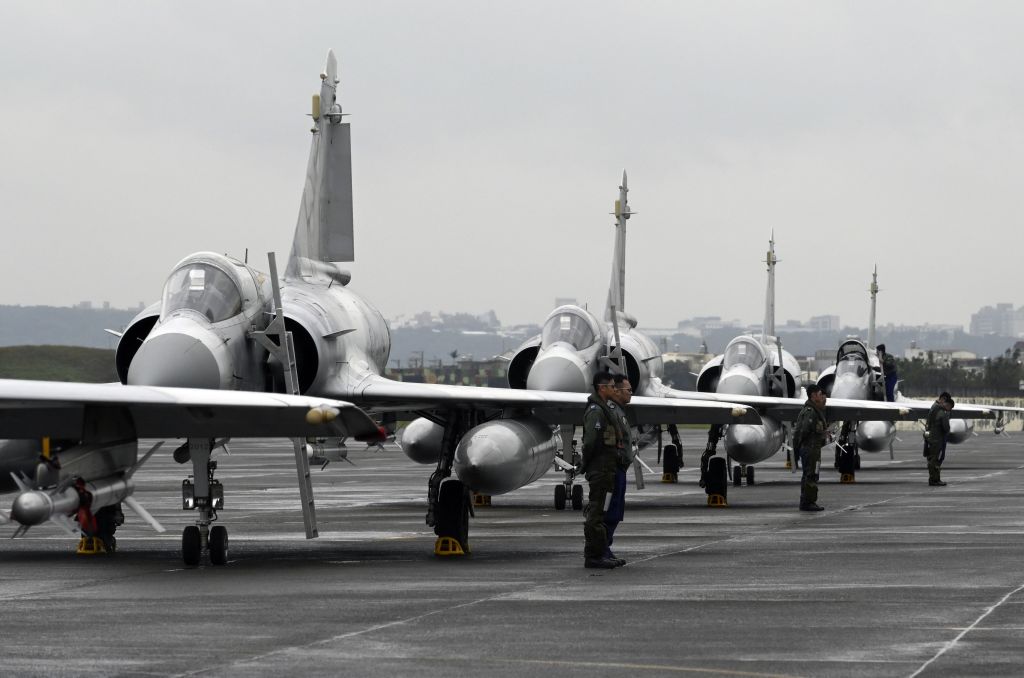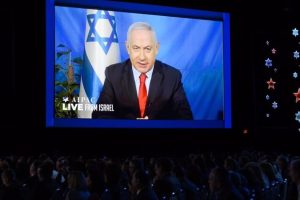( Spanish) — In recent years, tensions between the United States and China, the two major economic powers of the world, have been growing and one island has become the recurring symbol of this rivalry: Taiwan.
Every gesture from Washington towards Taipei regularly receives a reaction from Beijing, and this year there have been many: the latest occurred last week, when the Speaker of the US House of Representatives, Nancy Pelosi, announced her intentions to travel to Taiwan.
China’s Foreign Ministry then promised to take “decisive and forceful measures” if they went ahead with the trip.
And meanwhile, Taiwan has begun its annual Han Kuang military exercises, which are week-long and simulate an enemy invasion.
In May there had been another tense situation, when the president of the United States, Joe Biden, said that his country would respond militarily if China intervened in Taiwan, in the context that Russia’s invasion of Ukraine has generated concern in Taipei about a possible similar action by Beijing.
“We agree with the One China policy. We signed it and all the corresponding agreements were made from there, but the idea that it can be taken by force, just taken by force, is (just not) appropriate.” Biden said.
In June 2021 a group of US senators flew to Taiwan on a military plane to announce a major donation of Covid-19 vaccines, and the trip was seen by Beijing as the latest in a series of provocations.
And in October of that same year, some 150 Chinese warplanes flew near Taiwanese airspace in the largest incursion to date, according to Taiwan’s Ministry of National Defense.
Taiwan Air Force pilots stand next to their Mirage 2000 fighters during an exercise in January 2019. (Credit: SAM YEH/AFP via Getty Images)
The tensions are simply a reminder of the decades-long hostility between the governments in Beijing and Taipei, with both sides historically claiming to be the rightful rulers of all of China’s territories, including Taiwan.
Here’s a look at this historic feud.
the nationalist government
Taiwan’s official name, the Republic of China, dates back to its founding in 1911 after the collapse of China’s last imperial dynasty.
Under the rule of the Nationalist Party, or Kuomintang (KMT), led by Chiang Kai-shek, the Republic of China had to contend in the early 1930s and then during World War II with the advances of the Empire of Japan, as well as also to the growing power of the Chinese communists led by Mao Zedong.

Kuomintang leader Chiang Kai-shek in Taiwan in the 1950s. (Credit: Central Press/Hulton Archive/Getty Images)
In 1945, following the Japanese defeat, the ROC regained the island of Taiwan, which China had lost in a previous war with the Japanese. But four years later, in 1949, the Kuomintang was defeated in a bloody civil war on the mainland by the Communist Party army.
That same year Mao founded the People’s Republic of China, with its capital in Beijing.
Some 1.2 million Chinese, mainly military, accompanied the Chiang Kai-Shek government on its exodus to Taiwan, according to estimates made by Taiwan authoritiesand after defeating a brief incursion of the communist troops in the island they managed to establish themselves there.
Mao’s forces, instead, expanded their control into mainland China, and have since regarded Taiwan as a renegade province and a “unalienable part” that at some point will return to the control of Beijing.

Chinese Chairman Mao Zedong shakes hands with US President Richard Nixon after a historic Cold War meeting in Beijing in February 1972. (Credit: AFP/Getty Images)
Regional dispute, global tension
Separated by a strait, opposing ideological positions and a historical conflict, the two Chinas – the People’s Republic of China and the Republic of China – have since coexisted amid tensions, despite sharing traditions, culture and a common languageMandarin Chinese.
This tension between Beijing and Taipei has always been linked to the equally difficult relationship between Beijing and Washington.
The US government, an ally of the Kuomintang during World War II, did not initially recognize the legitimacy of the Communist government in mainland China. On the contrary, he continued to give his political support to Taipei.

A Chinese Shenyang J-16 fighter jet.
The member countries of the UN, however, recognized in 1971 the legitimacy of the People’s Republic, including its permanent seat in the Security Council, which until then had been held by Taipei.
On the other hand, the rapprochement between China and the United States that began in the early 1970s and in the midst of the Cold War led to the establishment of formal diplomatic relations between Washington and Beijing in 1979, and the transfer of the US embassy from Taipei to Beijing. Beijing.
But far from signifying a break in the relationship with Taiwan, the US has maintained strong commercial and military ties with the island, which it considers a key ally in the region, within the framework of a “strategic ambiguity”.
This includes the commitment of Washington to help Taiwan, an island democratically governed and with more than 23 million inhabitantsto defend against a possible invasion of the communists in China.
“One Chinese”
The Taiwan Strait has been the scene of military tensions and skirmishes between China and Taiwan for decades, with Beijing even bombing outlying islands controlled by Taiwan twice.
Between 1995 and 1996, the last great crisis occurred after the visit of the then president of Taiwan, Lee Teng-hui, to the United States. China fired missiles into waters near Taiwan in response to the meeting, and the United States ended up sending two aircraft carriers to the area.
At the same time, representatives from mainland China and Taiwan had begun rapprochement in the early 1990s, capped by the 1992 summit in Hong Kong, then still under UK control.

President Tsai Ing-wen during a rally on Wednesday, January 8, 2020, in Taoyuan, Taiwan, ahead of the presidential election.
Beijing and the pro-reunification parties in Taiwan assure that during that meeting there was an agreement regarding the principle of “one China”, that is to say that both parties recognize the existence of a single country that must be reunified.
But they disagreed on who is the legitimate authority to do so and even on the scope of that “1992 consensus”, even today rejected by the president of TaiwanTsai Ing-wen, whose party traditionally defends the formal independence of the island.
“There is only one China and the government of the People’s Republic is the only legitimate one and Taiwan is part of China,” points out the Foreign Ministry in Beijing.
In Taiwan, the official position is more ambiguous regarding reunification, and the island’s governments have sought to maintain the status quo. But the Kuomintang and other pro-reunification forces also insist that the ROC is the legitimate government of the entire territory.
With information from Eric Cheung, Nectar Gan, Brad Lendon, Kevin Liptak, Donald Judd, Wayne Chang, and Ben Westcott.





![[Img #74664]](https://thelatestnews.world/wp-content/uploads/2024/12/James-Watson-The-controversial-genius-behind-the-double-helix-150x150.jpg)








Add Comment